We learn life’s lessons from our experiences. If we are open, we know about life from everyone who crosses our paths; when we are ready, the teacher will appear. My teachers have been plentiful and have often emerged as horses.
“What I know about life I have learned from horses.”
My love of animals consumed my childhood. I had an affinity with them that has never wavered, but horses are my muse. I wanted a pony every year from the time I could say the word. I could finally buy and care for a horse when I was 18, but I would have done anything to be near or on them before that. I would stop on the side of the road and stand on the fence line if I saw any in a pasture, mentally willing them to come over so that I could smell them. Some of you will know what I am talking about; there is no better scent than the smell of a horse’s neck.
On an aside, it became evident that what I talk about with horses, the same could be said for my dogs or cats, playing golf or doing yoga, really from anything. Lessons are everywhere if we take them in. Horses are my catalyst. Yours may be something else. But the truth lies everywhere if we have our eyes and hearts open.
I compete in a sport called Endurance, where 50- 100-mile races are completed (on a National level, International times are different) in 12-24 hrs, including mandatory stops called vet checks. So you can think of it as an ultra marathon on horseback.
This story takes place in a race called the Western States Trail Ride ( WSTR), popularly known as the Tevis Cup, 100 miles in 1 day, one horse.
The Tevis is the granddaddy of Endurance, also referred to as the Hardest Endurance Race in the World. Endurance is a challenging sport, whether you ride to win or not. Sometimes someone would ask me, after I completed a race, “if it was an easy hundred.” A hundred miles is a hundred miles. Yes, some are on less challenging terrain in less demanding conditions, but easy is not the adjective I would choose.
Since 1955, the Tevis Cup has occurred yearly, on a full moon in July or August. The sport began as a challenge to see if modern-day horses were as fit as the pony-express horses, which traveled 100 miles on each leg of their journey. You can read about it here Tevis Cup FAQ.
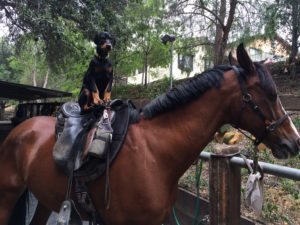 This story is about Steel Patriot and his first Tevis Cup.
This story is about Steel Patriot and his first Tevis Cup.
Not only does it take stamina in a horse to compete in Endurance, but it is also imperative to have the right mind. Steel had both.
There are many hopes and dreams at the 5:15 am start, with up to 250 horse and rider combos from many countries bustling around. Starting in the dark amongst the trees of the high sierras, the average completion rate is 43-50%. Many dreams would be shattered before the light would rise again at the 5:15 am finish line the following morning.
Steel and one of my other horses, Bogart and I, focused on making the World Cup USA Endurance team in 2010, so we competed in mainly 100-mile events.
I did not think it was too lofty to want to do well; it was a 50/50 chance of completion. I could indeed beat the odds and do better than finish. I had already completed this race on different horses in different years, so why not again?
However, less than 15 miles into the ride, everything changed.
Tevis is a gnarly challenging course with many single-track trails, remote, altitude, heat, and unpredictable weather, with minimal vehicle access. As a result, you are on your own for many miles.
Optimally I like to start in the back of the lead riders and take my time to summit the almost 10K peak in Squaw Valley, about 10 miles from the start. After which, we descend into an area full of wildflowers if the rains have been plentiful. Next, we enter the bogs. The bogs are in a muddy runoff area that gathers with snow melting. It is a single-track muddy trail that sucks the shoes right off your horses’ feet.
Countless stories of hooves wedged between the rocks forfeiting their chance to finish and claim the coveted buckle have been shared.
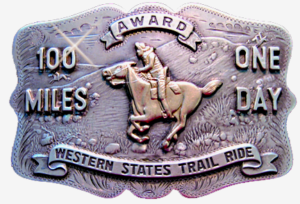 Once through the bogs, the trail weaves between the giant boulders called the Granite Chiefs. You can only go as fast as the riders in front of you at this point in the ride. If you happen to get behind slow ones, it is like being in traffic at a crawl. Despite the adrenaline coursing through you, you must take a deep breath and let it go. There is no place to pass on this part of the trail. Transitioning from the muddy bogs and traversing over the slick granite boulders of the Granite Chiefs can be challenging to hooves traction.
Once through the bogs, the trail weaves between the giant boulders called the Granite Chiefs. You can only go as fast as the riders in front of you at this point in the ride. If you happen to get behind slow ones, it is like being in traffic at a crawl. Despite the adrenaline coursing through you, you must take a deep breath and let it go. There is no place to pass on this part of the trail. Transitioning from the muddy bogs and traversing over the slick granite boulders of the Granite Chiefs can be challenging to hooves traction.
As I was jumping onto a large granite face, the horse in front of me quickly stopped, which, in turn, caused Steel also to stop quickly. It is similar to avoiding a rear-end collision. Steel and I were precariously perched upon a slippery smooth granite boulder without the ability to go back due to the horses behind us.
Having stopped so abruptly caused Steel to lose his footing, and he began to slide down the rock face. Below was a sheer canyon, I don’t know how many hundreds of feet down, but suffice it to say, it would be deadly if you fell.
A fantastic example of “the universe provides us with all the information we need” comes here.
Two weeks prior, while at a barn I trained at, Don, a friend who also happens to be a park ranger and endurance rider, popped in and asked if I had heard about a mutual acquaintance who rode Endurance and was a top-level competitor. She had been training on the Tevis trail a day prior, and her horse slipped on the Granite Chiefs.
She was able to dismount. However, she was unable to get her horse to right himself. As a result, he lost his balance and tragically fell to his death. Horrible cannot even express the feelings she must have felt. My heart sank for her and her majestic horse.
Don then began recounting his personal story of a few years back when he was on the Tevis trail, not in the exact location, much further into the race, when his horse, Wyant, also slipped.
This accident broke his femur and Don’s (not the horses), and Don could hike out and find help despite a broken leg. Having splinted his leg, Don was ready to return with a veterinarian and others to help climb down where the horse was stuck. They intended to humanely put the horse down and end suffering.
This was in the wee hours of the morning by now. I will interject here; endurance riders are demanding. Don was beyond tough.
When they returned to the sight, they found Wyant, and surprisingly even though the horse did have some gashes on his chest, he otherwise seemed pretty intact. Having eaten everything within his reach, which is a good sign, the challenge came to get him off the side of the mountain. They succeeded by continuing downhill to the American River and swam him to safety.
Hearing these stories weeks before going to Tevis, I wanted to remove those images from my mind. But Don continued speaking. He said he could have prevented what happened to him if he had known what he knows now.
“When a horse is on the side of an incline and needs to go up, they naturally rock backward first to get the momentum to jump forward like a teeter-totter. This is precisely what not to let them do if you are in this situation. Rocking back can force them to lose their balance, as had happened. So instead, you need to hold the horse’s head low to the ground and move them to scurry up with their hind end; very unnatural indeed.
I thanked Don for his insight and thought to file it in my brain, hoping never to utilize that file.
Back to Steel and the Granite Chiefs. Steel is precariously on the side of this very slick granite rock. I had managed to jump off, get his reins over his head, holding them firmly in my hands.
Gripping them for dear life, the guy behind me yells, “Don’t let go.” ( I know my blog is about The Let Go. However, there is an entirely different context).
I remember hearing nothing except the voice screaming, “Don’t Let Go,” and then silence. With the silence, I became ultra-calm.
My mind whirled through the files and stopped on the info I had just learned. Hold the head low.
With that:
With both hands, I held the reins down as close to the rock as I could. I braced myself, knowing there was the possibility of me following him down to the canyon below. And I prayed my reins would not snap.
I looked into his beautiful brown eyes and willed him with every ounce of determination and willpower for him to pull himself up. This was a moment that I would never forget, and to this day, as I think about it and write, tears well up, knowing that my connection with Steel was as deep as two souls could be. Our eyes met, and he knew that we were in this together. Our minds were synced.
As with all animals, horses see the images we think, and my entire focus was seeing him safe at the top of the boulder.
I gave the last pull, never losing eye contact, and “Don’t Let Go” screamed in my head. Steel moved and could maneuver himself to the top of the rock, standing up.
He was wobbly and not sure he wanted to take another step. But he had made it.
I don’t remember what was being said by the other riders, but I felt a standing ovation for Steel’s courage if that could happen while on horseback.
Don’t forget we were in a race, with at least 200 competitors behind us. So I got out of the way, and the rider directly in front and behind me stayed with me a few minutes to see if Steel was sound enough to continue or if I was going to need to walk him to the nearest help, which was about 10-15 miles in front of us.
Steel seemed ok. I continued slowly, walking for a while. Once we made it to the first vet checkpoint, if the vets saw anything wrong, that was the end of my race for the day. I was expecting him to show his soreness or reveal a pulled muscle. By walking, I could assure myself I was doing as minor damage as possible. I allowed us a few miles on foot to recover before remounting.
To my relief, we made it through the vet check, about 23 miles from the start, and we continued to the next check, which was at mile 36. Again, I was relieved but could not rest assured that no issues would arise as the trail continued.
The infamous Cougar Rock was between where I was and the next check—the “piece de resistance” of the Tevis Cup. I elected to go around it and forego a photo opportunity. I did not want to risk an injury to his already stressed body.
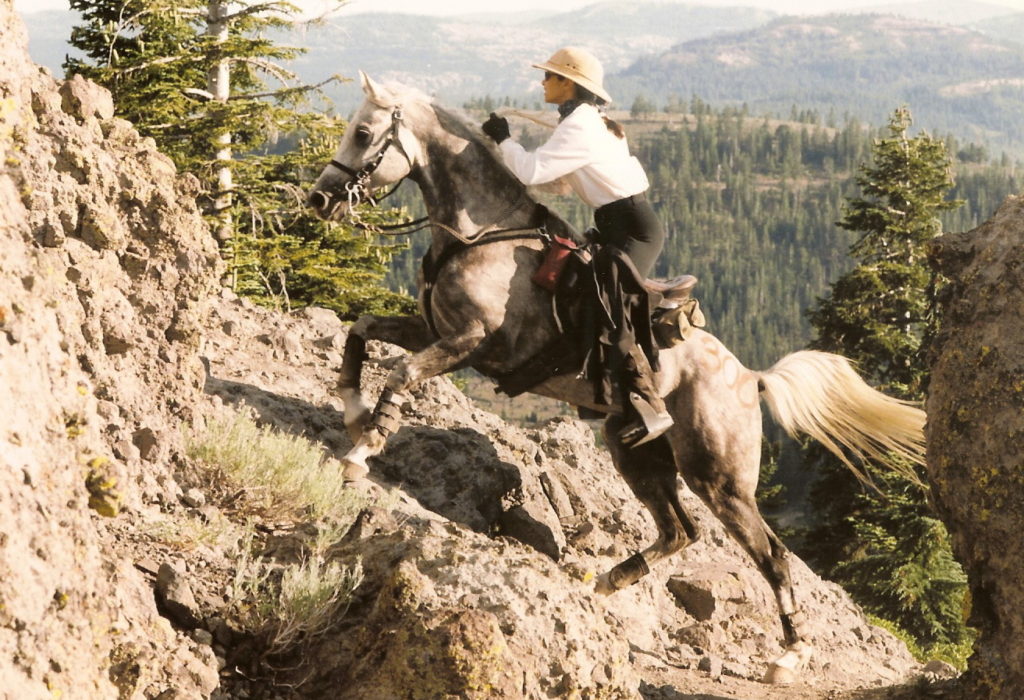 This picture is of a prior year on Pharoah.
This picture is of a prior year on Pharoah.
At Robinson Flats vet check, 36 miles from the start, I finally saw my support team/ crew.
My crew knew me well. I was usually within 10 mins of my ETA from point to point, barring any problems. Unfortunately, I was nearly 2 hours off my arrival time and almost at the cut-off deadline, which meant I would not have been allowed to continue if I had been 15 mins later.
I could clear the vet check with a clean bill of health and continue. Whew… 5 more vet checks and 64 more miles to go to the Finish.
My crew and everyone else wanted to “know what happened?”
At this time, I had to stay quiet and focused. If I allowed myself to recount anything that had just happened, I think I would have been a big puddle of mess. But unfortunately, I could not afford the luxury to let go at this moment.
Watching Steel as he ate and drank, he knew the drill. He was in the moment. When we stop, we eat, drink, and rest. Don’t worry about what anyone else is doing. Taking his lead, I ate and drank and fought to stay in the here and now. Sitting next to him, listening to his munching and breathing, helped calm my adrenaline-filled body.
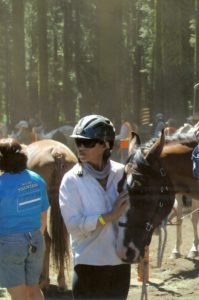
Foregoing the beautiful details and lessons that transpired over the next 30 miles, I will look deeper into this story.
I entered the Foresthill vet check, which was 69 miles into the race. I was able to see my crew again. It was starting to become dusk.
Once again, we had to go through the vet check. My mind was racing, “was Steel going to have any repercussions from his earlier slip?” We had made up a little time during the last section, but not much. Many riders had already been disqualified, perhaps 35-40 percent. I had to get through this vet check, two more (without my crew), and the final one at the Finish. Fingers crossed.
As I presented Steel to the veterinarians, my crew looked on. Thumbs up, we got the good to go, and I could release my held breath.
I had made a friend along the trail leapfrogging throughout the day, and we were in the vet check simultaneously. She had asked if I knew the next section, which I did; very dark, single track, covered in trees, up and down to the river and back and long — the California Loop.
She asked if she could ride with me. I welcomed the company. I had spent most of the day riding solo, so riding together was a pleasure. It is often more comfortable for the horses to have a companion. They can switch off who leads to conserve energy and share the pull. We did not know each other before meeting on the trail; however, through our experience together, we will be lifelong friends, Daniela and her steed, Louie.
My hopes had been dashed earlier in the day, knowing that making an excellent finish would not be accomplished. So I moved to Plan B, and that was to finish. To Finish is to Win is the motto of Endurance, and that day was a great example of it. Strategy comes into play during any race, and I now want to beat the 50/50 odds.
Steel and I were ready to head out. Knowing that we were in the last grouping of riders for the day, I lamented to Karyne, one of my crew, a Tevis competitor, and a wonderful mentor, “Karyne, with any luck, I’ll finish this darn race.” She took a beat and said, “No, luck needed. You do what you do best. The California loop is your kind of trail, hard and technical. And dark.” I am one of those crazy riders who love to ride when it’s dark.
She was giving me permission to go kick ass. Stop the pity party and go finish what I had started.
Daniela, Louie, Steel, and I headed out of Foresthill and, for the next 31 miles, worked as a team in perfect synchronicity.
Another Let Go is required to ride through dark brushy terrain with nary a moonbeam to light the way; you must trust your horse 100%. They can see far better in the dark than we can. Let your reins be loose, keep your head down (so as not to get hit in the face with a branch), stay light in your saddle to signal to your horse they are moving correctly, and breathe.
Steel knew what to do. He knew we were a team, and his eyes and brawn would carry us through this section.
We passed two more vet checks as the night became chilly and darker.
Leaving Foresthill close to the end of the pack, we continued to pass over 70 horses and riders on the last 31 miles, finishing in 20 and 21 places, with 97 total finishers that year.
When I looked at our time splits at the end of the event (when each leg was ridden), we were as fast or faster as many of the top finishers in this course section.
I know that if I had not listened to Steel when he needed to walk and recover from his near-fatal accident if I had not taken the time for him to eat when he asked, or had pushed him earlier in the day when the weather was scorching hot, I would have compromised what we were able to accomplish.
Every “fail” becomes a win if I can see and listen to the lessons presented. If I had not Let Go of my desired outcome’s original intentions, I might not have had the ultimate reward of finishing this event on a horse that looked like he could do it all again.
This was not my best finish, but it was at the top of my best races ever.
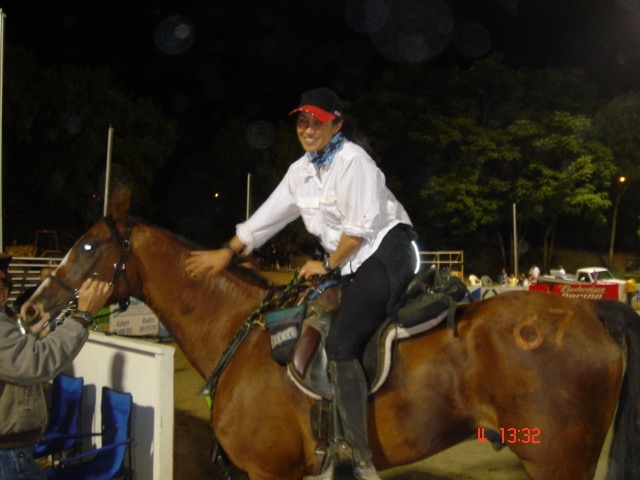
Here are some valuable lessons I learned and I cherish
1) Set goals and be prepared to let them go if circumstances change.
2) Trust when the universe sends you messages. They could save a life.
3) The friends you meet and face adversity are lifelong and honest.
4) Friends that stay strong when you are wavering and then kick you in the ass to remind you who you are are priceless.
5) Let go and trust in the doors that are opening. Not to push what doors have closed.
6) Your horse is connected to the forces of nature; they are true to themselves and do not know how to lie. They have hearts forged of gold, so listen and take their lead.
Letting go of what I wanted could not prepare me for what I received. The inner strength I have gained from this event and all the horse events I have participated in are the cornerstones of my life.
And always, ” What I know about Life I Learned from my Horses”
I thank every one of them and to Steel Patriot, the man.
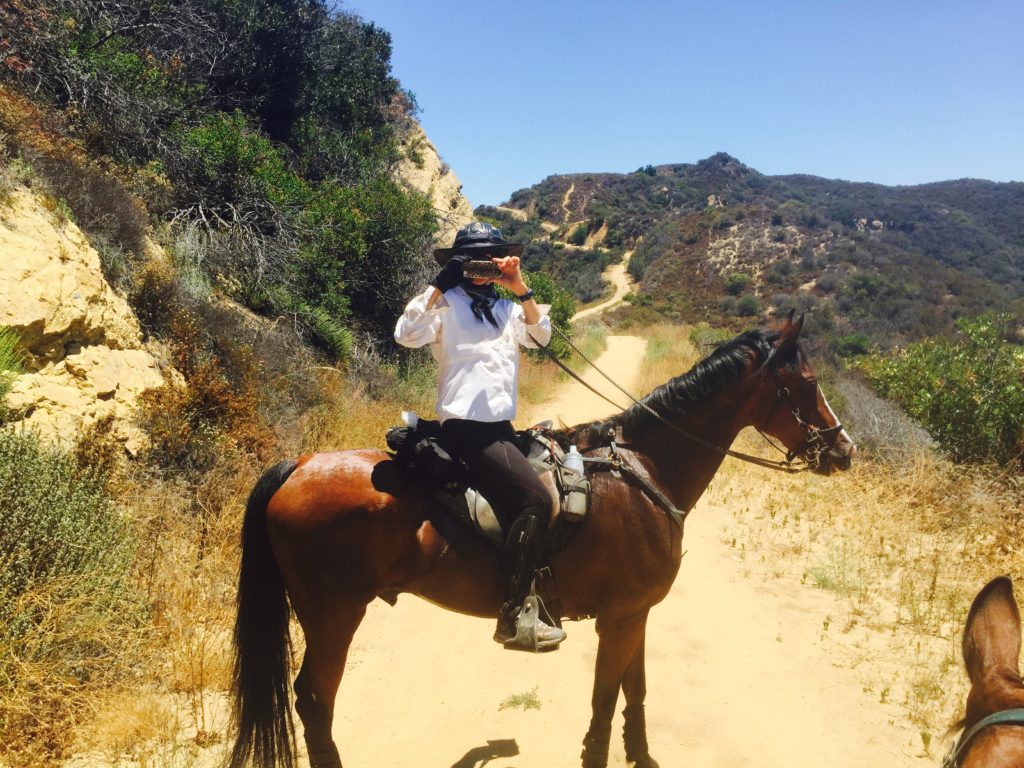 Steel Patriot is going strong at 22 years.
Steel Patriot is going strong at 22 years.
*Steel has passed over the rainbow bridge, taking a piece of my heart with him. RIP, beautiful soul.

To watch a documentary on Tevis https://www.youtube.com/watch?v=1xm3Zo3y2Gs
And a more extended version: I am on 7, 15-7:40 https://www.youtube.com/watch?v=jJnnftpsUh8&t=476s

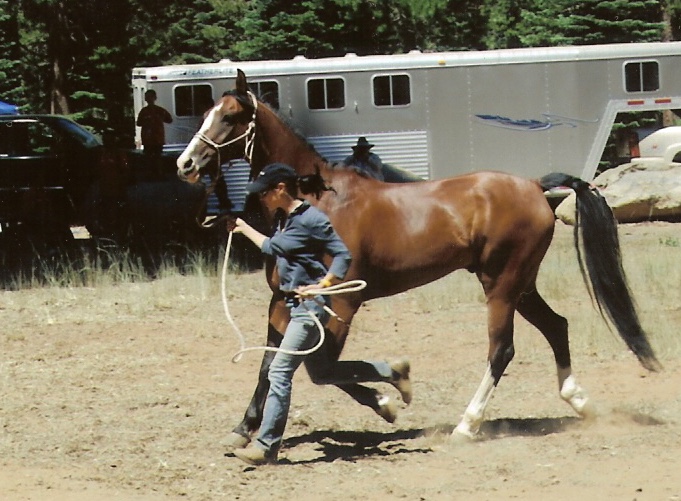
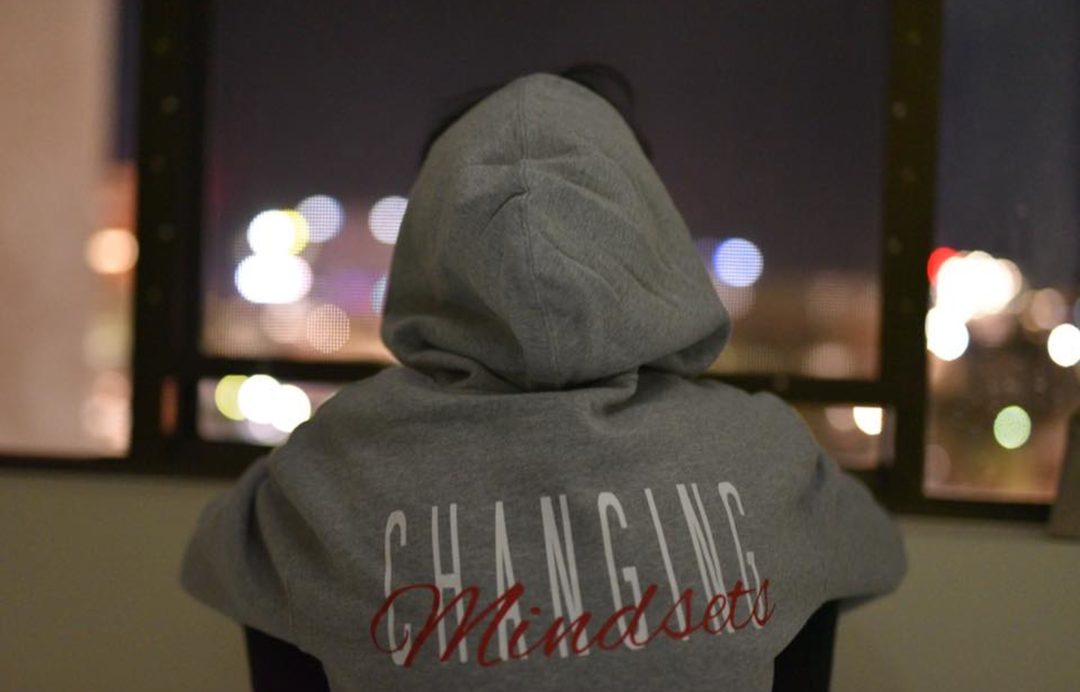
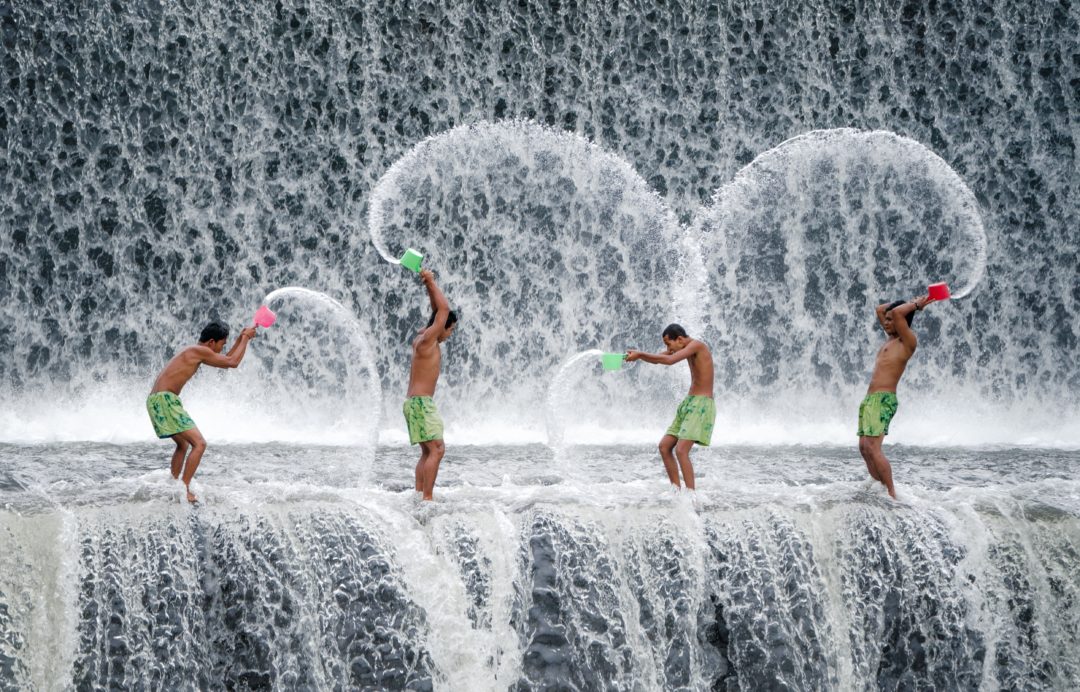
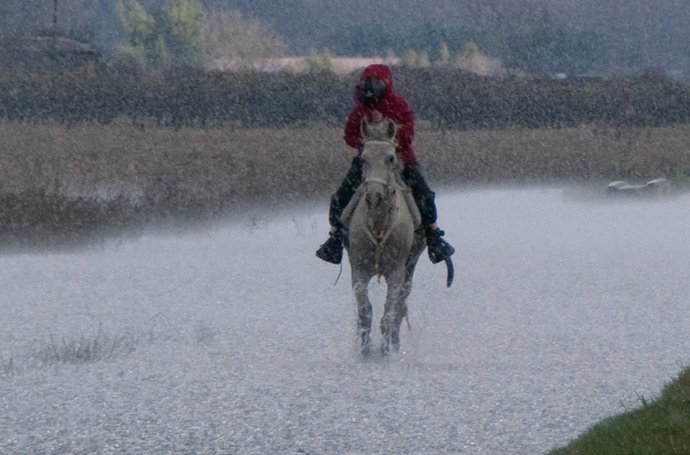
Kelly Hitt
What an amazing story!!! Just LOVE this! Love everything about it! Horses and the challenges that come with them have always helped me to learn and feel stronger. You must feel like Wonder Woman!!!
charisse
Kelly, We all have these stories. It may not be a cliff, but we all have situations that we have to keep out cool and pull through. Perhaps horses have taught me to stay cool in the face of other adversities or perhaps it is endurance. Whichever or whatever we find our strengths from our challenges. Glad you enjoyed it! Ride On!
Tara Rothwell
Profoundly touched by this as it reminds me of my own Tevis stories. Also to be grateful for friendships cultivated in adversity the ties are forever cemented and true. And when severed leave such a gap in the soul. I recently and unexpectedly lost a friend of 25+ years. She poked my soul up and encouraged me as a rookie smokejumper in 1992. Yes she was strong for me when I wavered, and never hesitated to remind me of all I am and push me forward when I needed it. I miss her so much!
charisse
Thank you, Tara. And I remember our own shared endurance experiences> Sorry for your loss.
Susan Mullen
This was a beautiful story…thank you for sharing this amazing life experience. Your and Steel’s courage, perseverance and unwavering trust touched my heart deeply. My emotions ran through several different channels. I smiled, I laughed and I cried. Simply beautiful…
charisse
Thank you Sue! I appreciate your feedback:)
Jacqueline Depaul
Wow this story is INTENSE. Thank you for sharing.
charisse
Thank You Jacqueline, Glad you enjoyed it.
D'Arcy
Thank you for sharing your moment with your wonderful horse, Steel! I remembered this story and needed to reread it. It has helped me get through today’s 2022 Tevis Cup tragedy. A tragedy leaving me with the feeling of helplessness for Susie Kramer and the loss of her horse today. Who, by the way, is also named Steel. I don’t know how Susie will work through the grief process. I do know she is a strong person. I hope she can find the strength and solace to accept that she did all she could have done. Again, thank you for your story.
charisse
Thank you, Darcy. Yes, what a tragedy for Susie and Steel. When I was writing her a condolence, I had tears in my eyes when I wrote Steel’s name. My heart is always connected that day. She will move through the grief, and it will never leave her either. Tevis is a special ride; the spirits of the land were hungry this year. Hope you are able to ride! CG